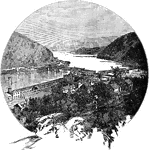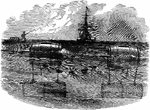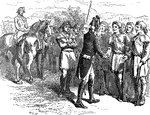Clipart tagged: ‘Potomac’

Blue Ridge Pass
"The victory at Blue Ridge Pass, Sunday, September 14th, 1862- infantry charge, and rout of the Confederates.…

Confederates Crossing the Potomac
This sketch depicts the Confederates crossing the Potomac during the Maryland Campaign or the Antietam…

Fort Washington
Fort Washington was the only defense that the capital had at the beginning of the Civil War.

Harpers Ferry
Harpers Ferry is a historic town in Jefferson County, West Virginia. It is located at the confluence…

Infernal machine
"Infernal machine designed by the Confederates to destroy the Federal Flotilla in the Potomac discovered…

From the Right Bank of the Potomac
"One day there came marching into camp a regiment from Virginia, from the beautiful valley of the Shenandoah.…
